Defining "Repository"
INLS 525: Managing Electronic Records
Week 10 (3/19)
Access, Openness, & Discovery
Week 8 summary:
- Freedom of Information Act (FOIA)
- Open Record Laws
- Discovery
- Privilege
- Federal Rules of Civil Procedure
-
Warrant
A society or culture endorses certain record keeping procedures and endows them with the ability to create trustworthy records.
- Standards
A Framework of Guidance for Building Good Digital Collections
3rd edition, December 2007
A NISO Recommended Practice
- Collections
- Objects
- Metadata
- Initiatives
Collections' Principles
- ... an explicit collection development policy.
- ... described so that a user can discover characteristics of the collection ... any information significant for determining the collection's authenticity, integrity, and interpretation. (emphasis added.)
- ... is curated, which is to say, its resources are
actively managed during their entire lifecycle.
- ... is broadly available and avoids unnecessary impediments to use. Collections should be accessible to persons with disabilities,
and usable effectively in conjunction with adaptive technologies.
- ... respects intellectual property rights.
- ... allows standardized measures of usefulness to be recorded.
- ... interoperable.
- ... integrates into the users own workflow.
- ... sustainable over time
Objects' Principles
- ... exists in a format that supports its intended current and future use.
- ... preservable.
- ... meaningful and useful outside of its local context.
- ... named with a persistent, globally unique identifier that can be resolved to the current address of the object
- ... can be authenticated
- ... has associated metadata
Metadata's Principles
- ... conforms to community standards ... appropriate to the materials ... [and] users of the collection.
- ... supports interoperability
- ... uses authority control and content standards to describe objects and collocate related objects.
- ... conditions and terms of use
- ... supports long-term curation and preservation
- ... are objects themselves and therefore should have the qualities of good objects, including authority, authenticity, archivability, persistence, and unique identification.
Initiatives' Principles
- ... has a substantial design and planning component.
- ... an appropriate level of staffing with
necessary expertise to achieve its objectives.
- ... best practices for project management.
- ... has an evaluation component.
- ... markets itself and broadly disseminates information about the initiative's process and outcomes.
- ... considers the entire lifecycle of the digital collection and associated services
a regularly interacting or interdependent group of items forming a unified whole
Open Archival Information Systems (OAIS)
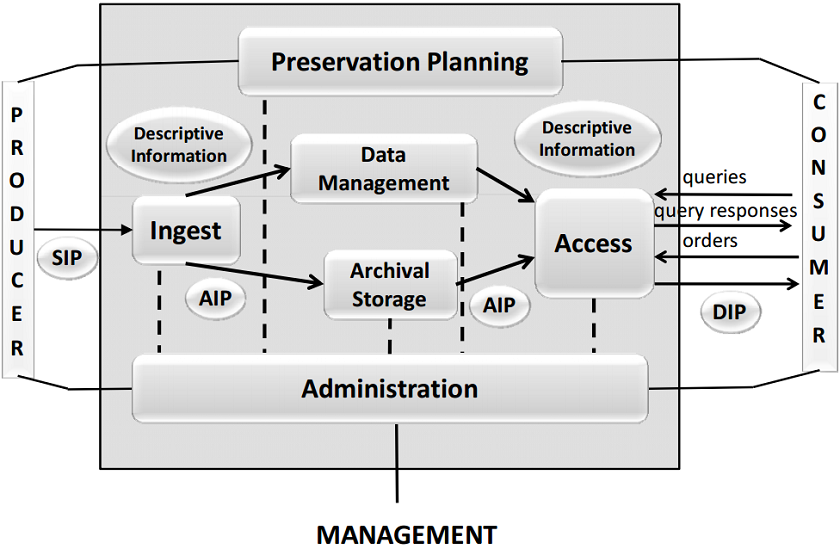
Doing things on one perfectly coordinated centralized platform is a massive act of hubris.
— Clifford Lynch, DigCCurr, 2009
Microservices
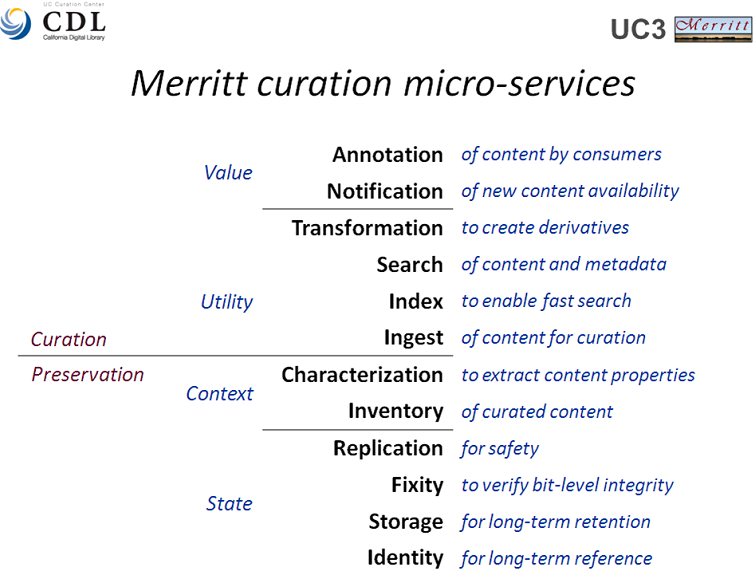
What OAIS is...
an Archive — OAIS
Ockerbloom, 2008
- Vocabulary
- Data model
- Required responsibilities
- Recommended functions
It's only a model. — Patsy
Archival Information Package (Detail View) (Fig. 4-18)
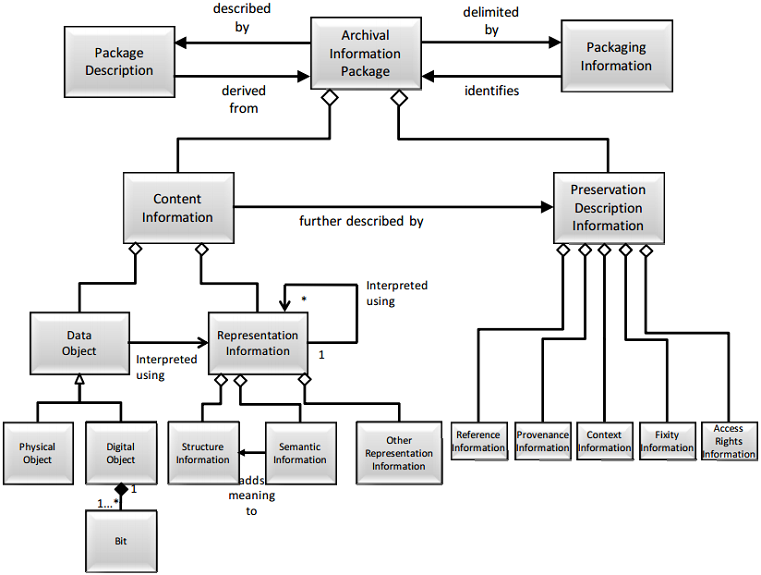
Composite of Functional Entities
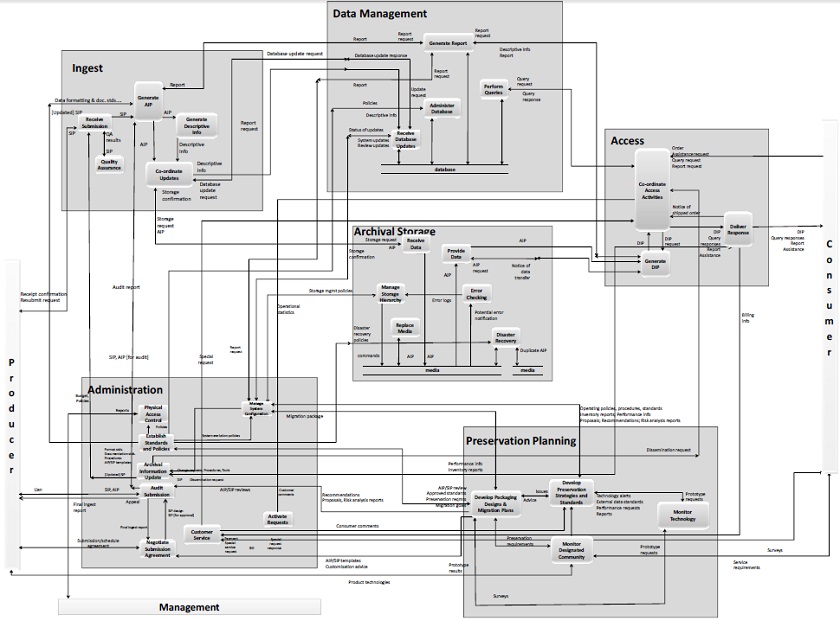
Functions of the Administration Functional Entity (Fig. 4-5)
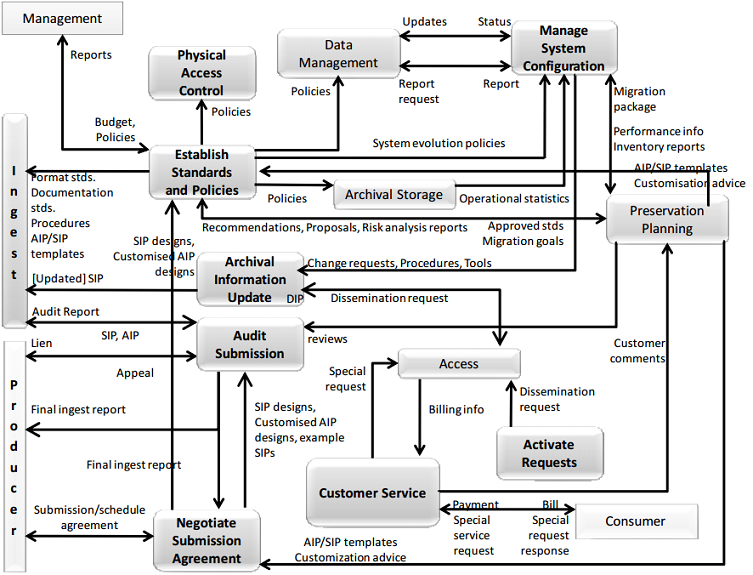
Administration Context Diagram (Fig. 4-9)
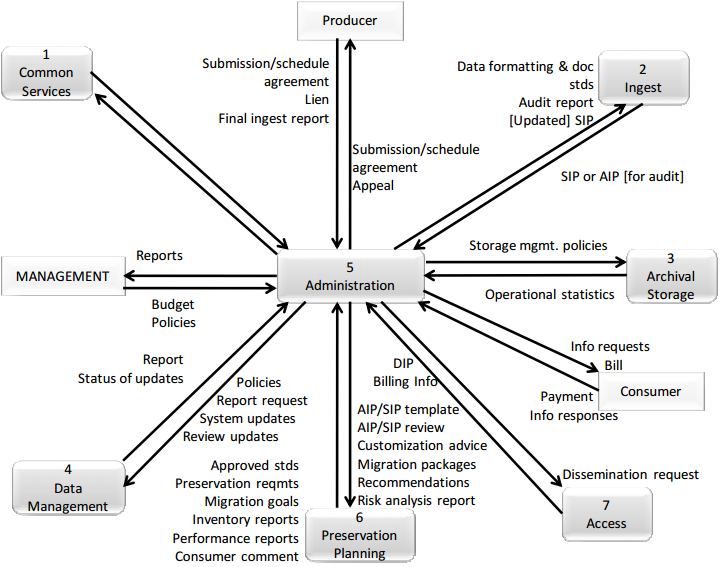
InterPARES 2 Project Book: Appendix 14
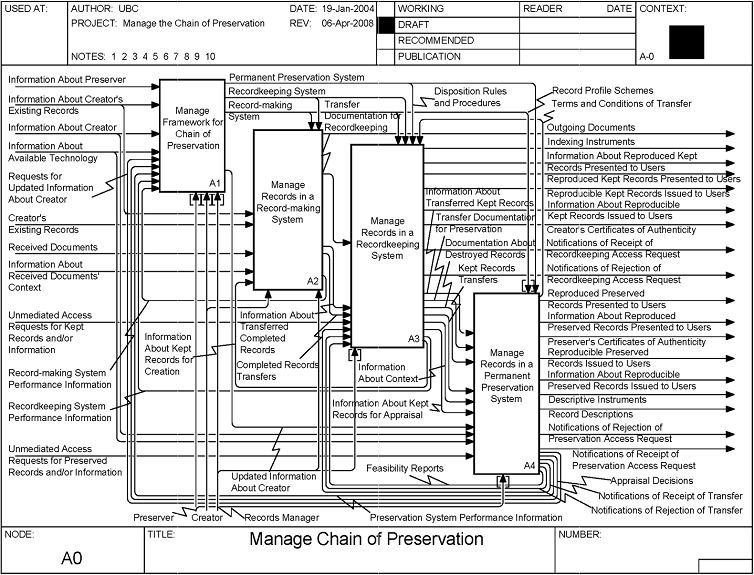
http://www.interpares.org/displayfile.cfm?doc=ip2COP_diagrams(complete).pdf
InterPARES 2 Project Book: Appendix 14
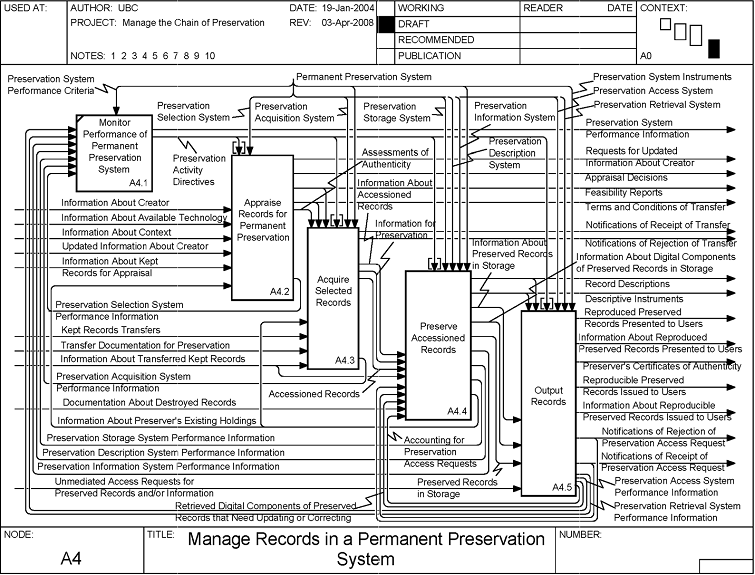
http://www.interpares.org/displayfile.cfm?doc=ip2COP_diagrams(complete).pdf
Trusted Repositories Authentication Checklist (TRAC)
[TRAC is] a framework of attributes and responsibilities for trusted, reliable, sustainable digital repositories capable of handling the range of materials held by large and small cultural heritage and research institutions.
- Requirements for bodies providing auditing services: ISO 16919
- Audit standards: ISO 16363
See also DRAMBORA (DCC) & Nestor (Deutsche Nationalbibliothek)
TRAC
-
Organizational Infrastructure
- Governance and organizational viability
- Organizational structure and staffing
- Procedural accountability and policy framework
- Financial sustainability
- Contracts, licenses, and liabilities
-
Digital Object Management
- Ingest: acquisition of content
- Ingest: creation of the archivable package
- Preservation planning
- Archival storage & preservation/maintenance of AIPs
- Information management
- Access management
-
Technologies, Technical Infrastructure, & Security
- System infrastructure
- Appropriate technologies
- Security
ISO 16919: Requirements for auditing bodies
Principles (adopted from ISO/IEC 17021:2006)
- Impartiality
- Competence
- Responsibility
- Openness
- Confidentiality
- Responsiveness to complaints
ISO 16363: Audit & Certification
-
Organizational Infrastructure
- Governance & organizational viability
- Organizational structure & staffing
- Procedural accountability & preservation policy framework
- Financial sustainability
- Contracts, licenses, & liabilities
-
Digital Object Management
- Ingest: Acquisition of Content
- Ingest: Creation of the AIP
- Preservation planning
- AIP preservation
- Information management
- Access management
-
Infrastructure & Security Risk Management
- Technical infrastructure risk management
- Security risk management








